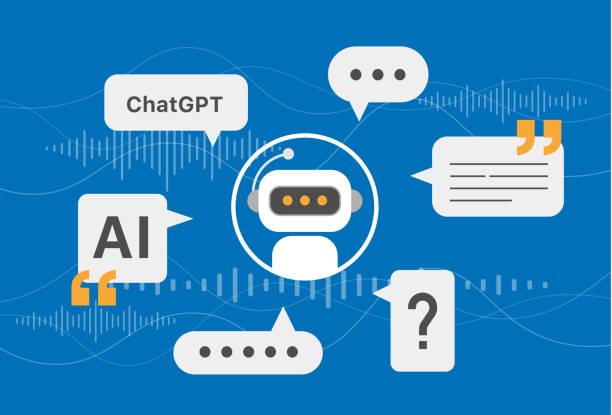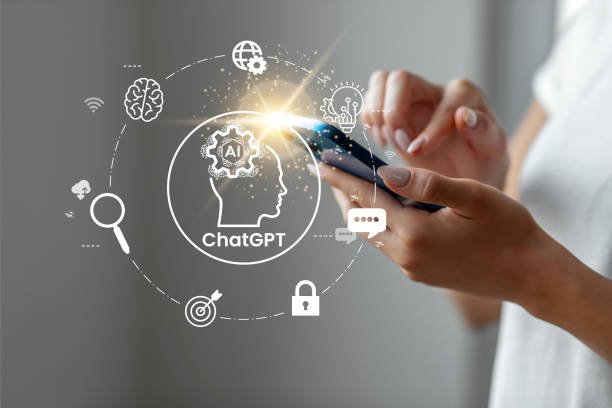Introduction
The ground-breaking AI technique, Generative Pre-trained Transformer (GPT), created by OpenAI, has completely changed how computers comprehend and produce human language. GPT’s powerful natural language processing skills and complex design have made it useful in various fields, including education, personal help, customer support, and content development.
As Generative Pre-trained Transformer develops, it keeps pushing the limits of what artificial intelligence (AI) can accomplish while offering ever more powerful tools to improve communication, creativity, and productivity. This article describes the capabilities, uses, and potential futures of Generative Pre-trained Transformers through a study of 20 major insights.
The Development of GPT
GPT has seen multiple revisions, each building upon the previous one. Every version, from GPT-1 to the most recent GPT-4, has improved performance and capabilities. With its fundamental transformer model, GPT-1 set the stage and illustrated the possibilities of large-scale unsupervised language modeling. GPT-2 built on this by demonstrating remarkable language-generating capabilities and greatly enlarging the template size, but its initial distribution was restricted because of worries about abuse.
GPT-3 increased the model’s scale to 175 billion parameters, improving its capacity to produce text that is similar to that of a person and carry out a variety of jobs with less need for fine-tuning. This design has been maintained by GPT-4, which adds even more complex designs and training methods to boost adaptability, comprehension, and performance.
The Architecture of Generative Pre-trained Transformer
Because a Generative Pre-trained Transformer is built on the Transformer architecture, it can process input text and produce output that makes sense. It makes use of many attention mechanisms to comprehend the context and generate pertinent responses. It uses only the coder portion of the Transformer model, concentrating on independent language creation. The Transformer model consists of a transmitter and a decoder.
By using an earlier word to inform the next, it generates text one unit at a time. To generate coherent and contextually appropriate replies, it must be able to determine the value of various words in the input text. This is made possible by the Transformer’s self-attention mechanism, which also enables it to capture connections and relationships over large distances in the text.
Pre-training Procedure
A Generative Pre-trained Transformer is trained on a large volume of text data from the internet during the pre-training stage. This enables the model to pick up syntax, world knowledge, and even some level of thinking. The model learns how to forecast the next word in a sentence by processing a lot of text in an uncontrolled way during pre-training.
This thorough instruction aids in the acquisition of a wide vocabulary and cognitive understanding. It is faced with a wide range of subjects, writing styles, and terminology due to the variety of data used in this phase. This helps the system produce text that is both fluid and contextually appropriate.
Adjusting for Particular Tasks
Generative Pre-trained Transformer’s adaptability can be further increased by fine-tuning it on certain collections to do particular duties, such as translation, summarization, or question answering, after pre-training. The process of fine-tuning entails retraining the previously learned model using a smaller, task-specific dataset.
It can be made better at generating legal sentences by adjusting it on a dataset that includes legal documents, and it can be made more accurate at producing scientific material by fine-tuning it on a dataset of scientific publications. Through this procedure, it may effectively apply its general language understanding to particular domains, leveraging its strength as a tool for a wide range of applications.
Natural Language Processing
Its exceptional strength is its ability to comprehend natural language. With the help of this skill, a Generative Pre-trained Transformer can comprehend the complexities and idioms found in human language, as well as the meanings that vary depending on the context and the syntactical structures. Its ability to parse and understand vast amounts of text and decipher user inputs’ intended meaning makes it an excellent choice for conversational AI applications.
It can have engaging and human-like conversations by producing responses that are accurate, relevant, and logical due to its knowledge of its surroundings and subtleties. Accurately understanding requests from users is critical for applications like chatbots, virtual assistants, and interactive customer support systems.
Capabilities for Text Generation
Logical text is appropriate for the situation and keeps up in style with the input is what the Generative Pre-trained Transformer does best. Its text-generating powers can be applied to a variety of tasks, from producing polished emails and in-depth articles to crafting captivating conversations for fictional characters. It is a useful tool for content creation since it can generate text while maintaining the original prompt’s tone, style, and intent.
It may produce original works of literature, finish incomplete writings, and even imitate particular writing styles. Users can improve productivity, discover new creative avenues, and expedite the content production process with this on-demand capacity to produce high-quality text.
Customer service applications
GPT is used in customer service to manage inquiries and offer assistance via automated systems. It is a useful tool for automated help desks and customer support platforms due to its broad understanding and ability to answer to a wide range of questions. In addition to handling routine client inquiries, Generative Pre-trained Transformer may provide troubleshooting techniques, walk users through a variety of procedures, and deliver accurate and fast information.
Businesses may lower wait times, improve customer satisfaction, and free up human agents to concentrate on other tasks by automating regular interactions. Furthermore, it can individually interact with clients due to its ability to speak, which enhances the client experience in general.
Function in the Production of Content
Content producers greatly improve their content creation method by using GPT to help with idea generation, script writing, and article drafting. It can assist with topic brainstorming, content structure outlining, and even full draft creation, which creators can subsequently edit and customize. This support is especially helpful during brainstorming sessions, as a Generative Pre-trained Transformer may produce a large number of ideas rapidly, assisting authors in overcoming writer’s block and exploring novel avenues.
It is a collaborative tool for writers, offering dialogue possibilities and plot advancements. It enables content producers to concentrate more on honing and polishing their work by automating preliminary content development chores, thus enhancing efficiency and output quality.
Improving Teaching Resources
GPT is used by educational sites to create individualized and engaging learning experiences for students. It may provide personalized textbooks, offer immediate feedback on homework, and lead interactive tutoring sessions. Education can be made more effective and enjoyable by Generative Pre-trained Transformer by customizing lessons to meet the requirements and styles of every student through the analysis of their input and responses. It can simplify difficult ideas, provide practice questions, and provide thorough explanations, all of which improve learning in general.
Furthermore, the quick feedback feature of the Generative Pre-trained Transformer encourages students to learn from their errors in real time, leading to ongoing development and a deeper comprehension of the material. This individualized approach makes college more accessible and flexible by supporting a range of learning styles and speeds.
Effects on Growth and Study
To help researchers accelerate their research and invention process, GPT generates hypotheses, writes research proposals, and summarizes scientific papers. By having the model produce succinct summaries of lengthy articles, researchers may use a Generative Pre-trained Transformer to swiftly review enormous volumes of literature while saving time and effort.
Furthermore, by pointing out gaps in our present understanding and recommending possible topics for investigation, its capacity to digest and comprehend complicated text also enables it to produce new research hypotheses. This capacity is especially helpful in multidisciplinary research, where it is essential to integrate knowledge from several domains.
Additionally, it can help in research proposal writing by producing preliminary versions that researchers can then improve. This would streamline the proposal writing process and free up scientists to concentrate more on their primary scientific work rather than administrative tasks.
Moral Aspects to Take into Account
The application of GPT presents moral questions about prejudice, false information, and the possibility of abuse in producing offensive content. Its models invariably pick up on and occasionally magnify the biases found in the massive internet datasets that they are trained on. This may result in the creation of prejudiced or biased content, which could have negative effects on society.
Furthermore, because it can generate extremely realistic language, it is a technology that might be abused to propagate misleading information with potentially harmful outcomes by producing convincing misleading or deception. Implementing strong rules and protections, such as designing usage regulations that are clear and transparent, detecting and mitigating biases in systems, and keeping an eye out for misuse to stop the generation of harmful content.
AI Model Bias
Similar to other AI systems, GPT is susceptible to biases in its training set. Ensuring accurate and fair AI applications requires addressing and reducing those prejudices. The choice of training data, why the data is labeled, and the natural prejudices of the people who compile and manage the collection of data are some of the causes of bias in AI models. Stereotypes, prejudices, and discriminatory language are some of the ways that these biases might appear in Generative Pre-trained Transformer, which is trained on many different types of internet material.
A multimodal strategy is needed to mitigate bias, including increasing the diversity and representativeness of training datasets, creating methods to recognize and lessen bias during training, and regularly assessing and monitoring the model’s outputs to ensure sure they do not perpetuate harmful biases. To create more equitable AI systems, researchers and engineers must continue to be watchful and proactive in resolving these problems.
False and incomplete information
The realistic text generation capabilities of GPT can be used to disseminate false information. Protective measures are required to stop AI from being abused for bad intentions. It is an effective technique for producing false material, fake news, and other types of misinformation that can trick individuals and sway public opinion because of the high-quality, human-like writing it produces.
To combat this, developers and legislators must put strong safeguards in place. Some of these include confirming the reliability of information sources, utilizing AI to identify and flag possibly misleading content, and encouraging digital literacy among the general population to enable individuals to critically assess the information they come across.
Additionally, to create frameworks and rules that guarantee the ethical use of generative AI technologies, cooperation between regulatory agencies, ethicists, and AI researchers is crucial.
Combination with Different Technologies
GPT is being increasingly combined with other state-of-the-art technologies to improve user experiences and broaden its range of applications. For instance, it can understand and respond to spoken language when paired with voice recognition technology, allowing for more intuitive and natural interactions in applications like virtual assistants and smart home appliances.
Furthermore, combining it with virtual reality (VR) produces more immersive settings where users can communicate with AI-driven avatars or get information and instruction in real-time while inside the VR environment. Voice recognition and VR work better together when combined with a Generative Pre-trained Transformer, which not only makes these technologies more user-friendly It also creates new opportunities for applications in training, education, gaming, and customer support, offering users smooth, dynamic, and incredibly captivating experiences.
Enterprise Utilization
Companies are adopting GPT to use natural language processing to extract insightful information from data, improve client interaction, and automate repetitive operations. Employees can concentrate on more strategic work by using a Generative Pre-trained Transformer to perform repetitive tasks like creating reports, handling client inquiries, and drafting emails. Additionally, it powers chatbots and virtual assistants that offer real-time assistance and tailored conversations, which is a critical aspect of client engagement.
Businesses also utilize it to examine enormous volumes of text data to find patterns and insights that help them make decisions. It makes complicated data systems easier to engage with by enabling natural language queries, which increases accessibility and productivity in commercial operations.
Interpretation of Languages
GPT is an effective tool for bridging communication gaps in a globalized environment due to its expertise in language translation. It makes cross-cultural communication and cooperation easier by accurately translating text between several languages. Businesses that operate globally will find this capacity important as it enables them to access and serve a wider audience through multilingual content and customer assistance.
Furthermore, its translation abilities are helpful for people learning new languages because they provide possibilities for language practice and real-time translations. It fosters inclusion and connectedness by removing language barriers and facilitating more seamless interactions in various intercultural settings.
Personal Helpers
Natural language interactions, enable a new breed of personal assistant programs that aid users with scheduling, question answering, and a wide range of other chores. With their ability to schedule appointments, send messages, create reminders, and retrieve information instantly, these AI-powered assistants improve convenience and organization in daily life.
Because it can comprehend and interpret natural language, it can converse with users conversationally, improving the user experience’s intuitiveness and usability. GPT-enabled personal assistants streamline personal management and increase productivity by taking care of repetitive duties and offering timely support while accommodating the preferences and demands of each user.
Upcoming Events
The goal of ongoing study is to improve GPT’s effectiveness, morality, and adaptability. It’s conceivable that further iterations will be more accurate and less biased. Scholars are consistently investigating novel approaches to improve the efficacy and moral dimensions of it. This includes creating training algorithms that are more effective and use less processing power, which will increase the technology’s accessibility and environmental friendliness.
Additionally, efforts are directed at enhancing the GPT models’ interpretability and transparency so that users may comprehend the models’ decision-making and text-generation processes better. Furthermore, developments in minimizing prejudices and guaranteeing justice are essential fields of study.
Future iterations of Generative Pre-trained Transformers should generate outputs that are more impartial, accurate, and contextually aware by integrating input from a variety of user communities and continuously improving the training procedures. This will increase the systems’ applicability and dependability across a wider range of fields.
Conclusion
GPT is a revolutionary development in artificial intelligence that has wide-ranging applications and important ramifications for many different domains. Our interactions with machines have changed as a result of their capacity to comprehend and produce writing that is similar to that of a person, opening up new possibilities for automation, communication, and information processing.
It is positioned to provide even more innovations and efficiencies as it develops, having an impact on a variety of industries like education, customer service, and content development. As GPT continues to be developed and integrated with other technologies, its capabilities are expected to be progressively enhanced, making it a more important tool in our digital life. It has enormous potential to advance technology and change how we interact with digital surroundings in the future.






